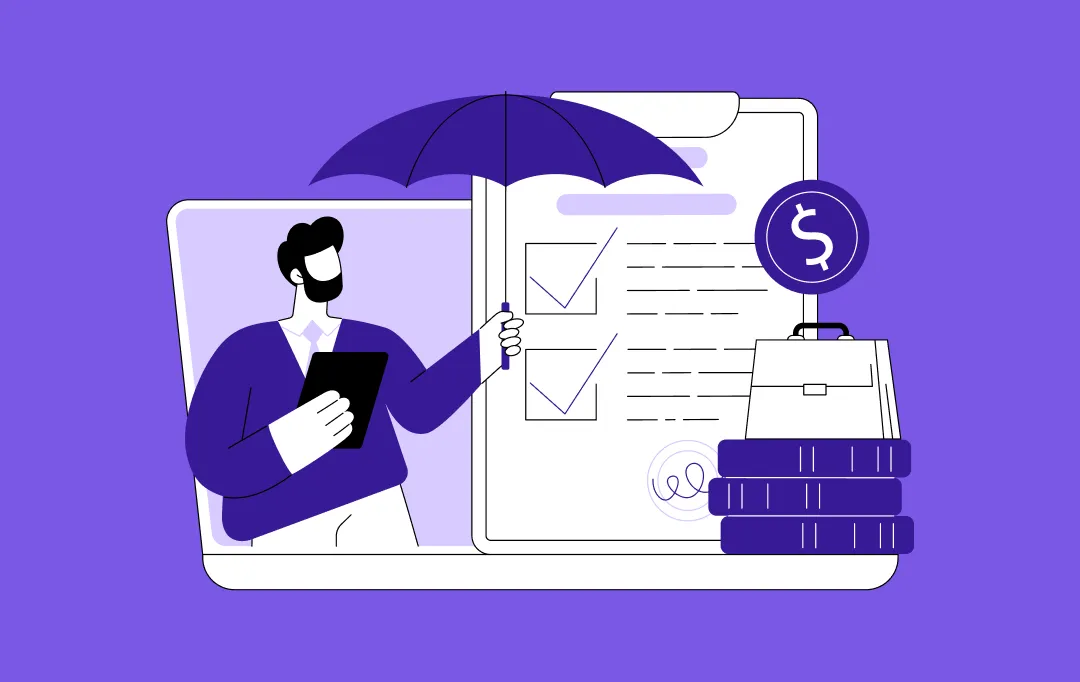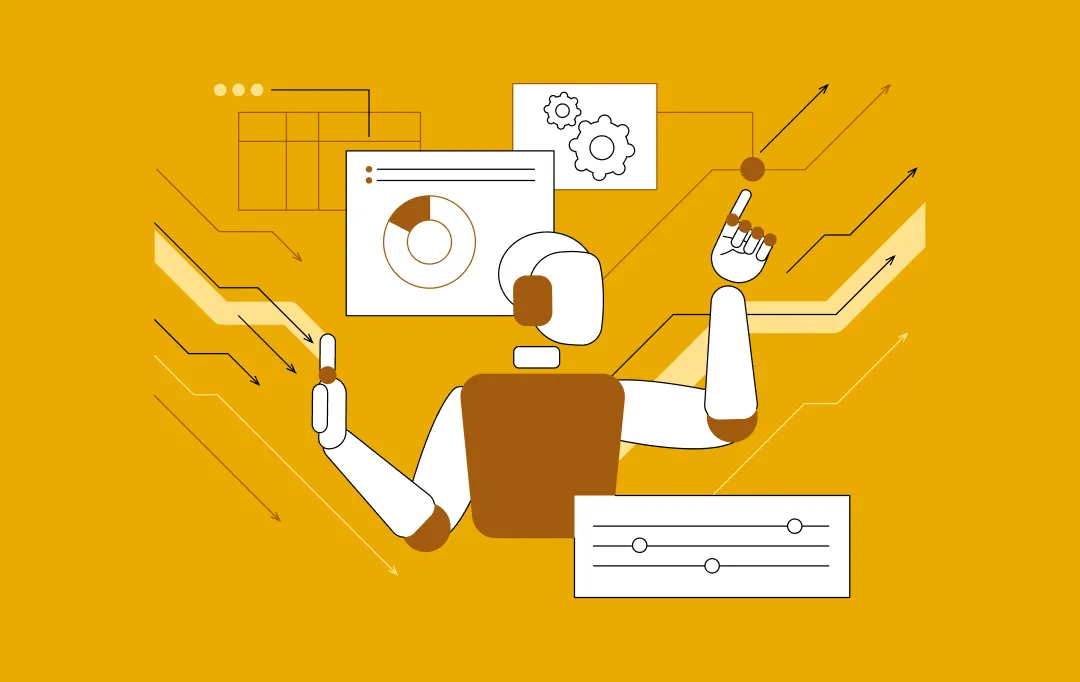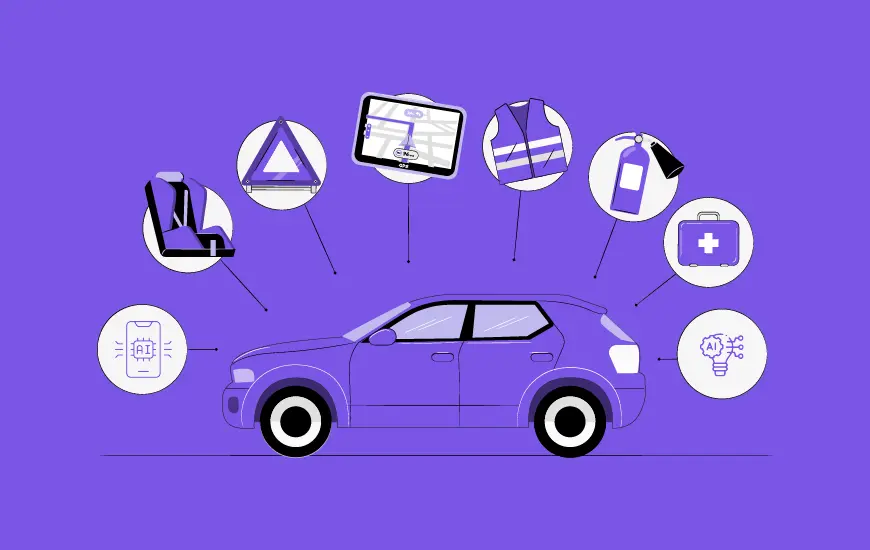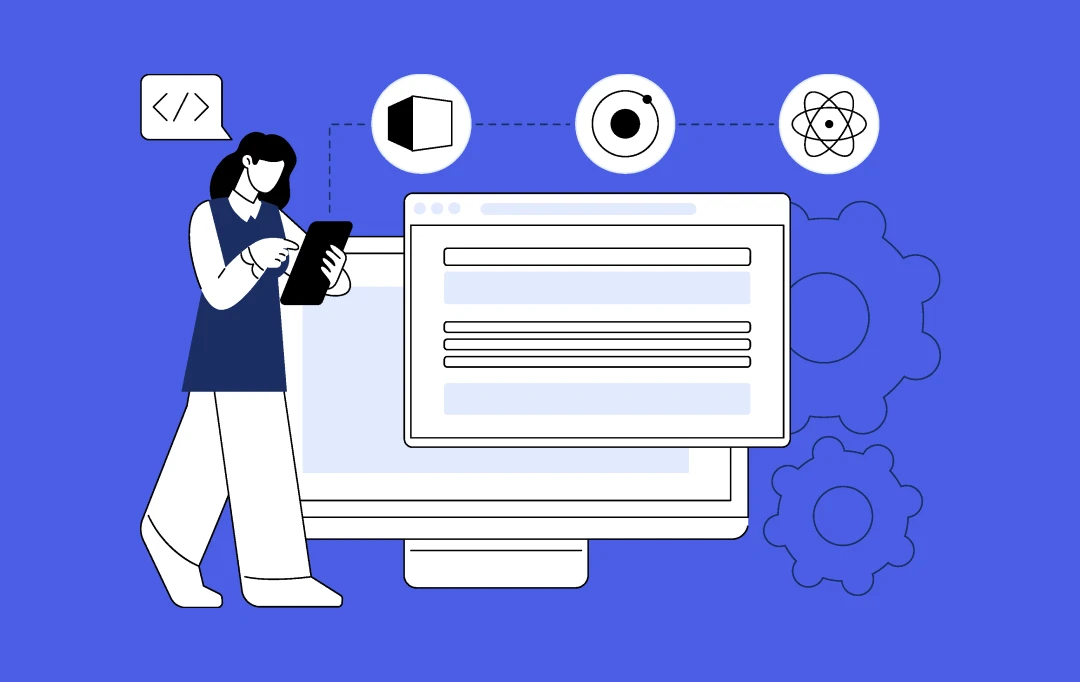- What are Peer-to-Peer Payments?
- Types of Applications to Look at Before Investing in Peer-to-Peer App Development
- 1. Standalone Services (PayPal and Venmo)
- 2. Bank Centric (Dwolla, Zelle, and Popmoney)
- 3. Social Media Centric (Facebook Messenger, SnapCash, Google Pay)
- Mobile OS-Focused Systems
- How do P2P Payment Apps Work?
- Sign Up and Login
- Linking Bank Account
- Adding the Recipients
- Initiating Transaction
- Validation and Authorization
- Transaction Processing
- Confirmation Notification
- Money Transfer
- How to Build a P2P Payment App?
- 1. Choose the P2P App Type
- 2. Prioritize Mobile Platform
- 3. Define features for your P2P app
- 4. Choose the Right Technology Stack
- 4. User-friendly UX design
- 5. Security
- 6. Testing
- 7. FinTech Legal Compliance
- 8. App Launch
- 9. Post-Launch Support
- Common Underlying Features in Every Successful P2P Payment App
- Unique ID/ OTP
- Notification
- Send Bill, Invoice
- Transaction History
- Chatbot
- Transfer Amount to Bank
- Onboarding & KYC
- Security & Authentication
- Funding & Cash-Out
- Core P2P Flows
- Multi-Currency & FX (if in scope)
- Activity, Receipts & Statements
- Disputes & Chargebacks
- Fraud Prevention & Monitoring
- Compliance & Auditability
- Admin Console for Ops
- Key Challenges in Developing P2P Payment App
- Regional Limitations
- Lack of Open Loop Solutions
- Payment Disputes
- Slower Adoption of Digital Transactions
- Security
- Compliance with PCI DSS
- Currency Conversion
- Understanding the P2P Payment App Development Cost Breakdown
- Functionality and Features
- Design and User Experience
- Security Measures
- Platform Compatibility
- Tech Stack
- Location of the Development Team
- How to Monetize a Payment App and Return Your Investment
- Transaction-Based Revenue Models
- Subscription and Premium Models
- Partnership and Affiliate Revenue
- How Can Appinventiv Help You With P2P Payment Application Development?
- FAQs
- Q. How long does it take to build a P2P payment app?
- Q. How much does P2P payment app development cost?
- Q. How does P2P apps work?
- Q. What are some of the top P2P payment app development trends?
- Q. How do P2P apps handle fraud prevention and transaction monitoring?
- Q. Can I integrate blockchain or cryptocurrency payments into my app?
Key takeaways:
- Global P2P market is expected to surpass $1927.23 million by 2030, with 48% of users preferring P2P apps for direct transfers
- Development costs range from $40,000 for basic apps to $200,000+ for advanced platforms with AI and blockchain features
- Essential security features include biometric authentication, multi-factor verification, end-to-end encryption, and PCI-DSS compliance
- Three main P2P app types are Standalone services (PayPal, Venmo), Bank-centric (Zelle, Dwolla), and Social media-centric (Facebook Pay, Google Pay)
- Revenue models include transaction fees (0.5%-3%), subscription services, premium features, and partnership commissions
FinTech app users are now enjoying the perks of improved security and efficiency, particularly in payments, as the digital boom has completely transformed the way we make transactions. The advent of the P2P payment app development services has emerged as a result of this FinTech revolution, enabling effortless, contactless money transfers.
These apps are now essential for splitting rent, restaurant bills, and travel expenses. They have substituted traditional banking and ATM visits, simplifying the management and transfer of funds in our cashless culture, streamlining financial processes. These apps offer real-time insights into one’s financial activity with features like transaction history tracking and real-time notifications, offering a level of transparency that traditional banking methods simply cannot match.
The P2P payment app revolution is an evolution toward a financial world that is increasingly technologically sophisticated and interconnected. It promises even more efficiency, security, and comfort as it evolves, especially for the generation that will increasingly shape the financial industry in the future.
This is probably why global P2P transactions are expected to surpass $1927.23 million by 2030. Also, as per Statista, 48% of respondents prefer using P2P applications for direct money transfers.

P2P payment apps offer services to consumers with greater accessibility, conviction, and faster transfers. This sudden rise in the usage of P2P apps over traditional ways has encouraged enterprise and business leaders to look forward to investing in Venmo-like P2P payment app development, a detailed study of which we will be doing in this article.
But firstly, let’s quickly refresh our basics.
What are Peer-to-Peer Payments?

Peer-to-peer, or P2P, payments are electronic money transfers between individuals facilitated by a dedicated P2P payment app. These applications securely link users’ digital wallets and bank accounts and keep track of the amount when a transaction is initiated, and the money is withdrawn from the sender’s app wallet or bank account. This effective digital method makes money transfers easier and guarantees quick, traceable, and user-friendly transactions.
When discussing it in detail, every P2P payment app falls among one of the three prime categories, each with its own benefits and set of market leaders.
Types of Applications to Look at Before Investing in Peer-to-Peer App Development
1. Standalone Services (PayPal and Venmo)
This type of online mobile payment app functions independently, unlike conventional banking systems. They are independent of all financial institutions and have their own autonomous systems for handling and safeguarding funds. One of the standout features of these apps is the ‘Wallet,’ which lets users store money safely inside the app, giving them the flexibility to transfer funds to their traditional bank account or conduct peer-to-peer transactions, whichever they want.
These apps give users access to their personal financial settings, allowing them to conveniently retain and manage their money independently. For instance, PayPal’s user base has grown to more than 202 countries, ever since its inception. Around millions of users make thousands of transactions per year, on average, via 100 different currencies, something that is enough to direct entrepreneurs toward PayPal or Venmo, like P2P payment app development.
2. Bank Centric (Dwolla, Zelle, and Popmoney)
Another app category to consider for taking advantage of P2P payment application development is bank-centric apps. These mobile apps involve banks as one of the parties when making transactions. While most banking institutions have their own apps, peer-to-peer payment apps facilitate fund transfers through their partner bank and credit unions. These apps draw from and deposit directly into bank accounts instead of a stored currency account.
3. Social Media Centric (Facebook Messenger, SnapCash, Google Pay)
Social media-centric apps are yet another type to consider when developing mobile payment apps. These types of mobile applications, launched by social media giants, enable users to transfer money using their credit/debit cards without exiting the platform. A few types are SnapCash, Softcard, Skype, and Google Pay.
Mobile OS-Focused Systems
Mobile operating system-focused P2P payment solutions are integrated directly into smartphone ecosystems, providing seamless payment experiences within the device’s native environment. These systems leverage the built-in security features and user authentication methods of mobile operating systems.
Read this blog to learn about the list of the top 7 most frequently used mobile payment apps.
How do P2P Payment Apps Work?

Whether it’s for paying rent, splitting a restaurant bill, or sending a birthday present, peer-to-peer (P2P) payment apps are becoming increasingly common. These apps offer a quick and easy way to transfer money, frequently avoiding the need for paper money or cheques. Let’s examine the ways how P2P payment apps work:
Sign Up and Login
After downloading the P2P payment app from an app store, they must sign up to create an account. Usually, this entails giving personal information, such as phone numbers and email addresses.
Linking Bank Account
An account’s funding source has to be linked by the users, like a bank account, credit card, or debit card. Linking a bank account is a typical practice since it makes transactions between the user’s bank and the app simpler.
Adding the Recipients
Users must add recipients to their contact list within the app to transfer funds. Both participants must use the same platform because most P2P apps employ email addresses or phone numbers for identification.
Initiating Transaction
After adding a recipient, the user inputs the desired amount as well as, occasionally, an additional remark or description to go along with the transaction. Additionally, they can also use the payment method (debit card or bank account) for initiating transactions.
Validation and Authorization
The P2P app then confirms the sender’s identification and ensures that there is enough cash for the transaction by examining the associated funding source. To verify the transfer, the user can be asked to enter a PIN, password, or biometric verification (such as fingerprint or face recognition).
Transaction Processing
As soon as the transaction is completed, the app credits the recipient’s account and debits the sender’s. Some applications might retain money in a digital wallet system until the recipient’s bank account receives it.
Confirmation Notification
After a successful transaction, both the sender and the recipient receive instant, real-time notifications verifying transfer success.
Money Transfer
Money received through the P2P app can typically be transferred to any linked bank account within the app itself. Additional processing time may be required for this step based on the app and the recipient’s bank server.
P2P payment apps have, in general, simplified the process of sending money between people, making it quick, safe, and easy. However, as these can differ from one platform to another, users should be aware of the conditions and fees related to the app they are using. Let’s now check out the steps to create a P2P payment app.
How to Build a P2P Payment App?
To initiate the process of digital wallet app development, formulating a comprehensive concept for your project and delineating precise requirements is imperative. Below is the outlined series of universal steps for a successful peer-to-peer money transfer app development tailored to your business needs.

1. Choose the P2P App Type
Initially, you need to select the type of your P2P application from the preferred services available such as banking and standalone solutions. Apart from these, you also can design apps that support real-time payments.
2. Prioritize Mobile Platform
If your app budget is limited, you can choose either Android app development or iOS app development. Prioritizing your mobile app development platform benefits you in two ways:
First, you understand which platform your users prefer and then analyze what features work for them and what functionalities need modifications. Second, you will later have space to develop one more app version for multiple platforms.
3. Define features for your P2P app
As mentioned above, the set of features your P2P carries defines the application’s success. Start with the basic ones and keep adding the key elements of the USP. Just in case you don’t miss out on anything, research your target audience, design a user portrait, and study the user flow. Also, put details into the path that your users will go through while interacting with the app.
4. Choose the Right Technology Stack
Right technology selection plays a vital role in making your P2P payment app more functional and interesting to your users. The latest innovation has emerged in FinTech, including NFTs (Non-Fungible Tokens), biometrics, face ID payments, etc. However, do not limit your technology stack to these features.
Do not hesitate to use convenient tools and technologies that give your P2P app a higher chance to succeed. Moreover, ensure that you follow the top blockchain-based FinTech trends and integrate supportive crypto technology that will help your app stay ahead in the mobile payments market.
4. User-friendly UX design
The user interface and UX design of your P2P payment app must be intuitive and straightforward. You don’t want your active users to waste time figuring out how everything works; therefore, try keeping mindful features that are easy to read.
5. Security
Integrating security protocols in your P2P payment app development process is a must. Simultaneously, your P2P app should be incorporated with cyber security and data safety features such as fingerprint, face recognition, scanners, etc. Ensure implementation of a two-way authentication feature for maximum compliance.
6. Testing
Testing and quality assurance is yet another crucial phase in the P2P payment app development process. Your team of quality assurance professionals must perform every possible test to fix bugs at the initial stage. You might even need experts to follow the beta testing of your app and its payment gateways.
7. FinTech Legal Compliance
PCI-DSS (Payment Card Industry- Data Security Standard) is a must-follow protocol when you are developing a mobile payment application. Do not forget to acquire a PCI-DSS certificate to create transparency and trust in the market.
8. App Launch
Following extensive testing and adherence to legal requirements, the application is released for download on app stores. In parallel, a well-thought-out marketing strategy is implemented to draw users and generate awareness about the app.
9. Post-Launch Support
The post-launch maintenance and support phase starts after the app launch. This phase includes bug fixes, user support, and ongoing monitoring. It ensures the software runs well, responding to user issues and changing times to keep the P2P payment solution trustworthy and safe.
Now, while this has given you a clear understanding of how to build a P2P mobile app, let’s move to the next step, i.e., the features to see when it comes to developing mobile payment apps.
Common Underlying Features in Every Successful P2P Payment App
Here are some of the common P2P payment app features that you need to consider implementing for a successful start in the FinTech world. These features serve as fundamental building blocks for setting your foothold in the financial technology sector:

Unique ID/ OTP
Every Fintech app has an OTP or unique ID that is sent to and verified by the sender before the money is deducted from their account or wallet. To make apps even more secure, some P2P payment service providers even ask for the OTP every time one opens the app.
Technical Frameworks used – Third-party SDKs like Twilio, Firebase, Nexmo, and Digimiles.
Notification
This peer-to-peer payment app feature allows people to inform when the payment has been initiated and when it has been received. Using this, users are notified of their account or wallet activity. The push notification feature lets users know about their upcoming bill due dates and provides other quick account-related updates.
Technical Frameworks used – Rest APIs, Chrome notifications, Amazon SNS, Firebase cloud messaging, and APNS.
Send Bill, Invoice
This particular feature allows the users to scan and send the bill to the person who needs to make the payment. Along with that, both the parties, the sender and receiver, should receive a generated invoice for the transaction, which should be saved in the app itself.
Technical Frameworks used – Rest APIs, Bamboo invoice.
Transaction History
Transaction history is again one of the important features to consider when building a P2P payment app. This feature would give the users a summary of all their past money transactions made through the app.
Technical Frameworks used – Rest APIs.
Chatbot
To build a payment wallet app like Zain Cash, considering chatbot as a prime feature is also profitable. This feature helps deal with various points of disputes that can come up when transacting funds through an app, from a lost internet connection in the middle of the transaction to the inaccurate deduction of a certain amount from the wallet.
Technical Frameworks used – Third Party party SDKs – Zendesk, Microsoft Bot Framework, LUIS, Wit.ai, Api.ai, Chatfuel, Facebook Messenger Chatbot, and Amazon Lex.
Also Read- Redefining Payments Experience with Conversational AI
Transfer Amount to Bank
Generally, users look for a way to transfer the amount that they receive through the apps to their bank accounts. While every app has its own set of business models, this is one of the most preferred features of P2P payment applications.
Technical Frameworks used – ACH, Dwolla.
These are some of the top-notch P2P payment app features that you can include in your P2P payment app that can help you garner more user engagement. However, implementing these features into your P2P payment application also comes with numerous challenges. Let’s have a look at those.
Onboarding & KYC
Frictionless sign-up with email/phone, followed by risk-based KYC (document scan, liveness, sanctions/PEP checks). Keep it progressive: verify only what’s required for the user’s current limits, then step up as they transact more.
Security & Authentication
Every transaction is protected by multiple security layers that work invisibly in the background. Biometric authentication (fingerprint, face ID) combines with device recognition and smart PIN requirements to keep your account secure. Our intelligent system knows when to ask for verification and when to let you transact freely, so security never feels like a burden.
Funding & Cash-Out
This feature allows users to add money via cards and bank rails, then withdraw to accounts or cards with clear fees and timelines. Instant payout options are a differentiator—show eligibility and limits upfront. All fees and timing are clearly displayed upfront, so you’re never surprised by hidden costs.
Core P2P Flows
This features let users transfer money to friends using their phone number, email, username, or bank details. Split restaurant bills with your group, request money from that friend who forgot their wallet, or set up recurring payments for shared expenses.
Multi-Currency & FX (if in scope)
Hold multiple currencies in your digital wallet and convert between them with real-time exchange rates. Before any conversion, you’ll see exactly how much you’ll receive, including all fees and charges. No surprises, no hidden markups – just transparent international money management.
Activity, Receipts & Statements
Get instant notifications for every transaction, view your complete payment history with powerful filtering options, and download statements whenever you need them. Add notes and photos to transactions for easy expense tracking.
Disputes & Chargebacks
If something goes wrong with a payment, A guided, in-app dispute flow system walks you through the resolution process step-by-step. Upload evidence, track progress, and get regular updates – all within the app. Clear timelines and status updates mean you’re never left wondering what happens next.
Fraud Prevention & Monitoring
AI-powered fraud detection continuously monitors for suspicious activity without interrupting legitimate transactions. Instead of blocking payments outright, suspicious activities trigger additional verification steps to confirm it’s really you. Advanced pattern recognition and real-time risk assessment keep fraudsters out while letting your money flow freely.
Compliance & Auditability
Your financial data is protected by the same security standards used by major banks. Full audit trails, encrypted data storage, and strict compliance with financial regulations mean your information stays private and secure. Regular security updates and policy improvements happen automatically in the background.
Admin Console for Ops
Back-office teams get comprehensive tools for user management, transaction monitoring, and compliance oversight. Streamlined case management, automated risk assessment tools, and real-time dashboards provide complete visibility into platform health and user activity.
Key Challenges in Developing P2P Payment App
Even though we are at the peak of the digital money era, the industry is still struggling with a few persistent challenges that need to be overcome. Let us look at both technical and non-technical challenges that are still posing a threat to the P2P payment industry –
Regional Limitations
The major players of the P2P industry are restricted in their geographical limitations. It is still not common for a P2P payment app development services provider to enable fund transfer between two nations. As the FinTech industry continues getting overcrowded, a brand needs to expand its geographical reach to emerge as an industry leader.
Lack of Open Loop Solutions
As of right now, interoperability between the payer and payee on the same platform is crucial when using P2P apps for transactions. While it’s easy to transfer money across users in your network, there are times when you have one-time transactions with someone you don’t know.
The open-loop platform enables the users to conveniently accept and transfer funds from/to anyone – eliminating the need for the involved parties to be connected through one platform or give and take personal information.
Payment Disputes
P2P payment apps raise a number of challenging issues. For example, there could be situations where payments you initiate are accidentally sent to unintended recipients or when funds are deducted from your account and never reach the person you intended to pay.
These risks may arise in the brief interval between fund withdrawal from your wallet and its arrival in the recipient’s account. When creating a custom P2P payment application, it is wise to meticulously take into account these concerns.
Slower Adoption of Digital Transactions
While people are adapting online payment methods and the increasing number of P2P apps, the industry is still growing at a slightly slower speed. People are still more comfortable using cash and cards instead of mobile apps. The reason behind this is not the UI or accidental lagging; the reason is being unsure of the safety measures these apps follow to save confidential information.
Security
One of the biggest technology-related challenges that P2P app development companies face is security. Going by the track record, hackers have been able to get into some of the most secure institutions and platforms like NIC Asia Bank and PayPal.
The high level of vulnerability has made security one of the biggest challenges in the mobile P2P payment industry. With the huge amount of confidential data being stored in one place, P2P payment service providers must create a secured data record management system.
Compliance with PCI DSS
It is imperative for every brand dealing with confidential banking information to follow the PCI DSS Compliances. To be eligible for the certificate, the P2P payment service providers should meet these criteria –
- Develop and maintain a secure system and network
- Have a vulnerability management system in place
- Create strong access control standards
- Safeguard confidential information
- Continuously test and monitor networks
- Maintain and update all information security policy
Currency Conversion
Another challenge that the P2P payment service providers face is calculating and converting currencies in real-time. With 180 currencies worldwide, it can get tricky for the service providers to create a mechanism that keeps everything on track.
Along with this, the money conversion and fund transfer need to be done in the shortest time possible: an event that is easier when banking institutions are involved but a little complex when it comes to a digitized market.
With challenges known, it’s time to know move on to the most crucial part of this blog, which is the cost estimation of peer-to-peer money transfer app development. Let’s find out.
Understanding the P2P Payment App Development Cost Breakdown

With a clear understanding of how to create a P2P payment app, it is now time to learn about the cost of building one. You can analyze the cost of building a P2P payment app by taking into account certain factors, most importantly, the complexity of the application. Let’s have a deeper look:
Basic P2P Payment App: A simple P2P payment app with few features and simple operations can cost between $40,000 – $120,000. These apps may not have many extra features and are mostly used to enable monetary transactions between users.
Medium-Complexity P2P Payment App: A medium-complex P2P payment app costs between $120,000 to $200,000. This category of apps provides a wider range of features and services. This type of app is embedded with improved security, an intuitive user interface, and extra features like transaction history or bill splitting.
Complex P2P Payment App: A complex and advanced-level P2P payment app costs between $200,000 and above. These apps are feature-rich and frequently designed for extended usage. Advanced security protocols, global payment gateways, third-party service integration, and extensive user management and transaction tracking tools are a few examples.
Let’s now check out the factors that influence the cost of building a P2P payment app:
Functionality and Features
One of the most important cost factors in P2P app development is the complexity of features. Advanced features that improve user experience but raise costs include real-time notifications, seamless interaction with payment gateways, multi-platform compatibility, and stringent security levels. The time and resources needed to develop and maintain these features increase the overall project expenses.
Design and User Experience
The foundation of a successful app is an intuitive, navigation-friendly, and user-centered design. Although this degree of design intricacy increases user engagement, it might necessitate a greater investment in design and development resources.
Security Measures
Security is crucial for peer-to-peer payment apps as financial transactions are sensitive. It is crucial to put strong security measures, such as data encryption, rigorous user authentication, and fraud prevention techniques. However, the development cost will increase because of the specific expertise and finance needed for these security improvements.
Platform Compatibility
App development for multiple platforms like web, iOS, and Android can be more expensive. It takes more work to adjust the software to function flawlessly on all platforms because each has different requirements and standards. Although cross-platform app development increases the development cost, it boosts the app’s reach and results in greater user engagement.
Tech Stack
An essential part of developing an app is the tech stack. It covers the choice of third-party integrations, frameworks, and programming languages. The choice of these technologies can have a big impact on the cost of development. Few technologies may require higher skill levels of developers, which may impact hourly rates.
For instance, utilizing advanced tools and frameworks would necessitate hiring more experienced developers, which could raise development costs. The tech stack must be carefully considered to strike a balance between project requirements and financial restrictions.
Location of the Development Team
A significant factor that influences the P2P payment app development cost is the team’s geographic location. In regions like the USA and some other Western countries, the cost of development tends to be higher due to higher labor costs than outsourcing to global regions like Central and Eastern Europe and Asia. However, it is always beneficial to hire a time with greater costs, as they would ensure end-to-end transparency along with offering post-launch maintenance services.
Thus, the cost of building a P2P app could range anywhere between $40,000- $200,000 and above, depending on the factors discussed above.
How to Monetize a Payment App and Return Your Investment
Building a successful P2P payment app requires a well-thought-out monetization strategy that balances user experience with revenue generation. Here are the most effective ways to monetize your payment application:
Transaction-Based Revenue Models
Transaction Fees
- Instant Transfer Fees: Charge fees for instant transfers to bank accounts
- Credit Card Processing: Apply fees for transactions funded by credit cards
- International Transfer Fees: Implement fees for cross-border transactions
- Merchant Transaction Fees: Charge businesses for accepting payments
Interchange Revenue Partner with card networks and banks to earn interchange fees from debit card transactions.
Subscription and Premium Models
Premium Account Features
- Monthly/Annual Subscriptions: Premium memberships for enhanced features
- Higher Transaction Limits: Premium users get increased daily/monthly limits
- Priority Customer Support: Dedicated support for premium subscribers
- Advanced Analytics: Detailed spending reports and financial insights
Business Account Subscriptions
- Professional Plans: Monthly fees for business features
- Bulk Payment Processing: Reduced fees for high-volume merchants
- API Access: Developer tools and integration capabilities
- Advanced Reporting: Business analytics and tax reporting features
Partnership and Affiliate Revenue
Financial Services Integration
- Investment Platform Partnerships: Earn commissions on investment account sign-ups
- Credit Card Offers: Commission on approved credit card applications
- Loan Referrals: Revenue per successful loan application referral
- Insurance Partnerships: Commissions on insurance product sales
Merchant Network Revenue
- Cashback Programs: Partner with retailers to offer cashback, keeping a percentage of the cashback amount
- Loyalty Programs: Revenue sharing with participating merchants
- Gift Card Sales: Commission on gift card purchases
How Can Appinventiv Help You With P2P Payment Application Development?
Appinventiv knows how people pay, buy, and invest. We bring you extensive and world-class fintech app development services ranging from investment solutions to dynamic KYC platforms to fraud prevention and wealth management software. These services are meticulously designed to meet the wide range of demands of your customer base and guarantee a safe and easy financial transaction.
We follow a rigorous security approach while providing an end-to-end digital payment solution to your business. We maintain a strict security strategy throughout the development process to guarantee the best protection for sensitive financial data. Our end-to-end digital payment solutions incorporate modern security features to protect your FinTech company and client data.
For instance, we worked on several FinTech projects like Bajaj Finserv, Mudra, EdFundo, and others, helping these businesses boost their user engagement. We created reliable and secured P2P payment applications that made us one of the most trusted FinTech app development companies.
When you choose Appinventiv as your P2P payment software development services partner, you open up a world of limitless options for unique FinTech application solutions. Our goal is to provide your company with the technology and tools it needs to prosper in the rapidly changing digital economy.
Talk to us to explore infinite custom FinTech app solutions.
FAQs
Q. How long does it take to build a P2P payment app?
A. A peer-to-peer payment app development usually takes 6 to 12 months. Testing, team size, features, and complexity are some of the factors that affect the overall time of developing a P2P app. While more complex apps with more features could require more time to design, simpler apps might take less time. Read this blog to know how long it takes to develop an app.
Q. How much does P2P payment app development cost?
A. A simple P2P app with basic features can cost you around $40,000 – $120,000, whereas a medium complexity app will cost between $120,000 to $200,000. Lastly, an advanced P2P app with top-level features and functionalities will cost more than $200,000. Connect with experts to get the exact P2P payment app development cost estimation.
Q. How does P2P apps work?
A. Users of peer-to-peer payment applications must create an account and link their financial institutions or credit cards to the service app account. For added protection, some apps also request passwords and personal information. After completing the app’s setup, users can locate other users using their email addresses, phone numbers, and QR codes.
With just a few clicks, the users can select the recipient’s name, the payment amount, the payment reason, and the transfer amount in order to send and receive money. Depending on the bank server and the kind of service used, the transmission of funds could take a few seconds to several minutes.
Q. What are some of the top P2P payment app development trends?
A. Here are some of the top P2P payment app development trends:
- Biometric authentication
- Contactless payments
- Blockchain integration
- Ai-powered chatbots
- Cryptocurrency support
- Cross-border transfers
- Instant settlements
- Voice recognition
- Tokenization security
Q. How do P2P apps handle fraud prevention and transaction monitoring?
A. Effective programs combine KYC, device fingerprinting, velocity/rule-based controls, sanctions/PEP screening, and transaction monitoring that flags anomalies (e.g., rapid repeats, unusual geos/amounts). Pair this with case management and SAR/escalation workflows. For card data, align to PCI DSS controls; for AML, maintain risk-based monitoring and periodic model reviews.
Q. Can I integrate blockchain or cryptocurrency payments into my app?
A. Yes, you can integrate blockchain or cryptocurrency payments into the app via custodial (third-party) or non-custodial approaches. Expect additional obligations: Travel Rule compliance in many jurisdictions and enhanced KYC/AML around crypto on-/off-ramps. If you go this route, scope licensing early (e.g., VASP/Money Service Business) and use providers with robust compliance tooling.


- In just 2 mins you will get a response
- Your idea is 100% protected by our Non Disclosure Agreement.

How to Build a Custom Insurance Claim Management System?
Key takeaways: Streamlined Processing: Insurance claims management software automates data, cutting claim cycle times from weeks to days. Tailored to Workflows: Custom software aligns with unique claims workflows, streamlining operations. Cost & Scalability: Development costs range from $40K to $400K, scaling with features like AI and IoT integration. Compliance & Security: Built-in compliance with GDPR,…

How RPA is Transforming Wealth Management: Key Use Cases and Benefits
Key takeaways: RPA is no longer optional; it’s redefining how wealth management firms operate by automating manual, time-consuming processes and freeing advisors to focus on client strategy. Automation delivers faster, error-free client onboarding, smoother compliance reporting, and real-time trade reconciliation, driving efficiency across operations. Wealth firms using RPA are cutting costs, scaling operations without extra…

FinTech Product Development Playbook: Step-by-step Process, Challenges, Solutions
Key takeaways: Fintech products succeed when strategy, compliance, and engineering move together from day one. Building for scale early reduces costly rework as users, transactions, and regulations grow. Strong fintech product management focuses on reliability and trust, not just feature speed. Real adoption comes from solving one clear financial problem before expanding further. The most…




































